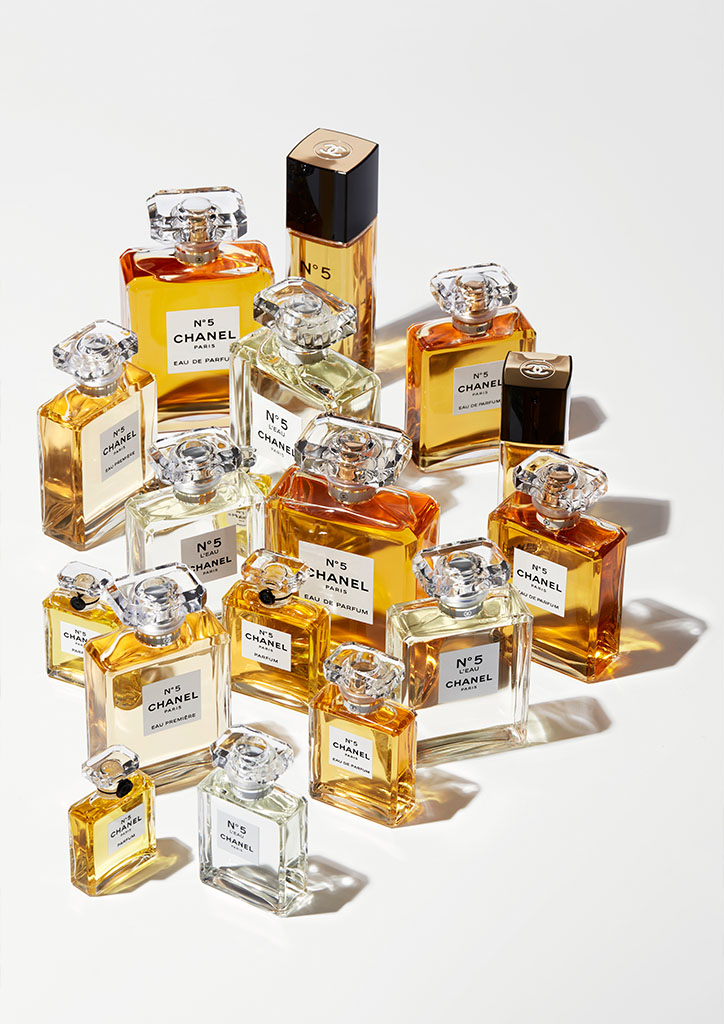The French fashion icons commemorate a century of unbridled olfactory heritage
The N°5 is a fragrance of many firsts. Apart from being the first fragrance created by Gabrielle Chanel, it arrived in 1921 as the first fragrance to be launched under her own name. In an era where fragrances for women were drastically limited to the scent of a single flower, Chanel sought to liberate femininity from its olfactory constraints in the same way that she used her creations to free minds and assert a new style. Designed to break the traditions of its time and to conform to the rules of no one, Ernest Beaux crafted an avant-garde composition of the finest natural ingredients while utilizing new technology at the time in synthetic molecules called aldehydes, resulting in a fragrance that exalts its own notes rather than subdues it. The pioneering scent of the N°5, equipped with its radically abstract character, did not just become the tipping point that ushered the modern era of perfume that we know today; it was also a reflection of Gabrielle Chanel’s personality. Her mirror image, in fragrance form. Witness the story of this revolution as told in five iconic fragrances.
Preservation and reinvention of the N°5, from one perfumer to the next
Three perfumers have since succeeded Ernest Beaux, all of whom inherited the common duty of protecting the House’s iconic fragrance and the responsibility of maintaining the untainted quality of the fragrances. Like a torch, the secret formula of N°5 has been passed down to Henri Robert, Jacques Polge and now Olivier Polge. “Preserving N°5 requires my constant attention,” attested Polge, Chanel’s In-House Perfumer-Creator since 2015. His year revolves around the harvest calendar of the ingredients used to compose N°5. From harvest to extraction, Polge carries out each step of this painstaking process in partnership with CHANEL’s Laboratory of Fragrance Creation and Development, ensuring that the N°5 remains exceptional year after year.
Since its creation in 1921, N°5 has been to CHANEL what grammar is to language, determining the style of all other CHANEL fragrances. As an endless source of inspiration, the N°5 remains the driving force and soul of the House in proclaiming a manifesto of absolute freedom; both for the creator and the creation. With the exception of Henri Robert, the House’s successive perfumers have ushered five unique reinterpretations of N°5, including the original Parfum.
The N°5 Parfum (1921)
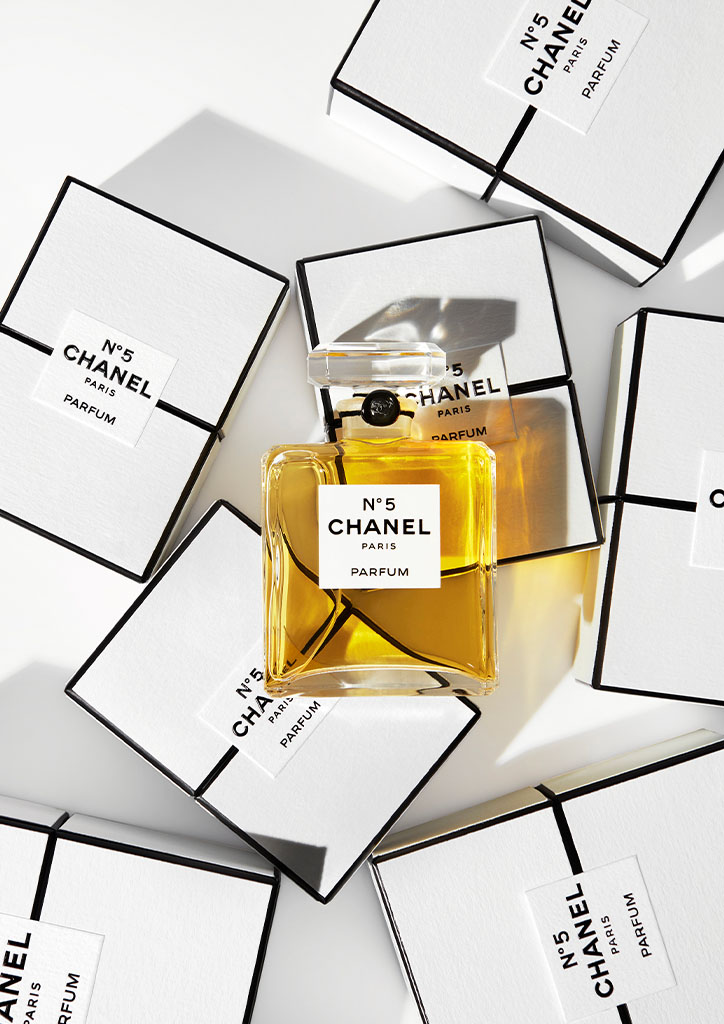
As the most precious of the five interpretations, Ernest Beaux knew that Gabrielle Chanel wanted her fragrance to be inimitable. “The starting point was a very rich floral fragrance, which was completely novel at the time,” Olivier Polge shared. Incorporating the most luxurious ingredients at his disposal into the formula, Beaux developed an opulent composition that was a stark contrast from the minimalist design of the bottle. Characterized by a particularly intense blend of may rose and jasmine from Grasse, the N°5 Parfum’s powerful scent trail represented a clean break from the single-note fragrances that were prevalent during this time, defining an era for its unprecedented use of aldehydes. As CHANEL’s début fragrance, N°5 Parfum set the standard for the House’s olfactive style, as well as its tradition of excellence and expertise in perfumery from flower to bottle.
The N°5 Eau De Toilette (1924)
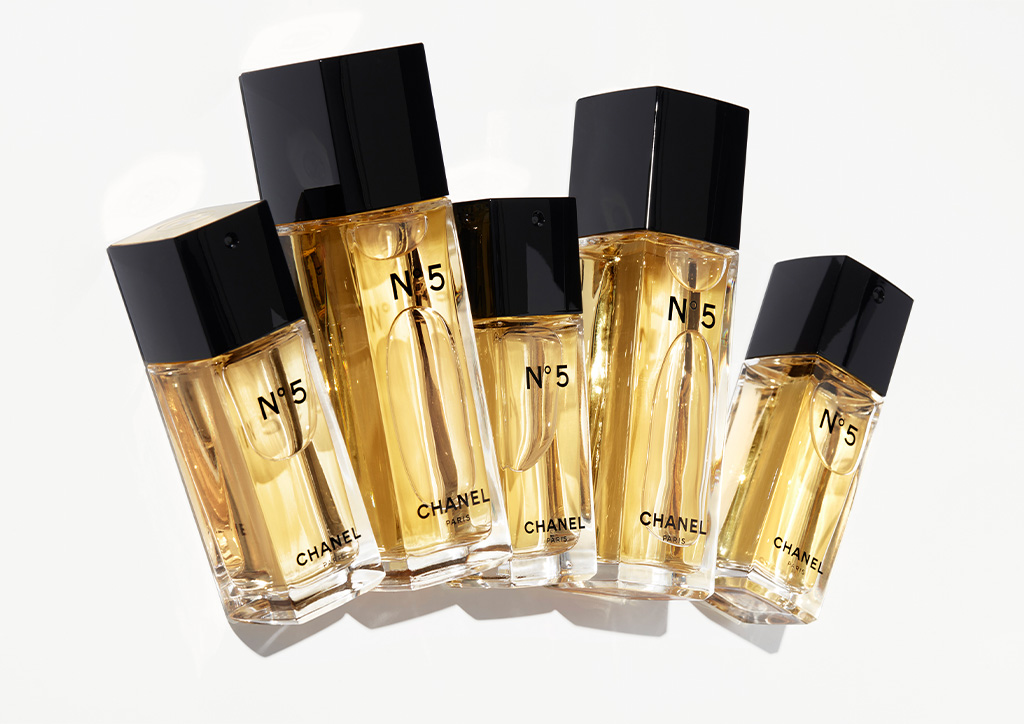
Three years after the Parfum, Ernest Beaux conceptualized the first variation of N°5. “The highly precious nature of the Parfum quickly justified the need for a lighter eau de toilette version that stayed true to the spirit of the original,” explained Polge. Woodier than the original fragrance, the eau de toilette is distinguished by the dry, lively nuances of vetiver, and a deep, offsetting scent of sandalwood. Led by a floral bouquet of jasmine, rose and ylang-ylang, the eau de toilette continued to showcase the notorious aldehydes unique to N°5. This less heady first reinterpretation of the original Parfum also introduced a new way to experience fragrance—the spray—which allowed for a generous, wide-sweeping application.
The N°5 Eau De Parfum (1986)
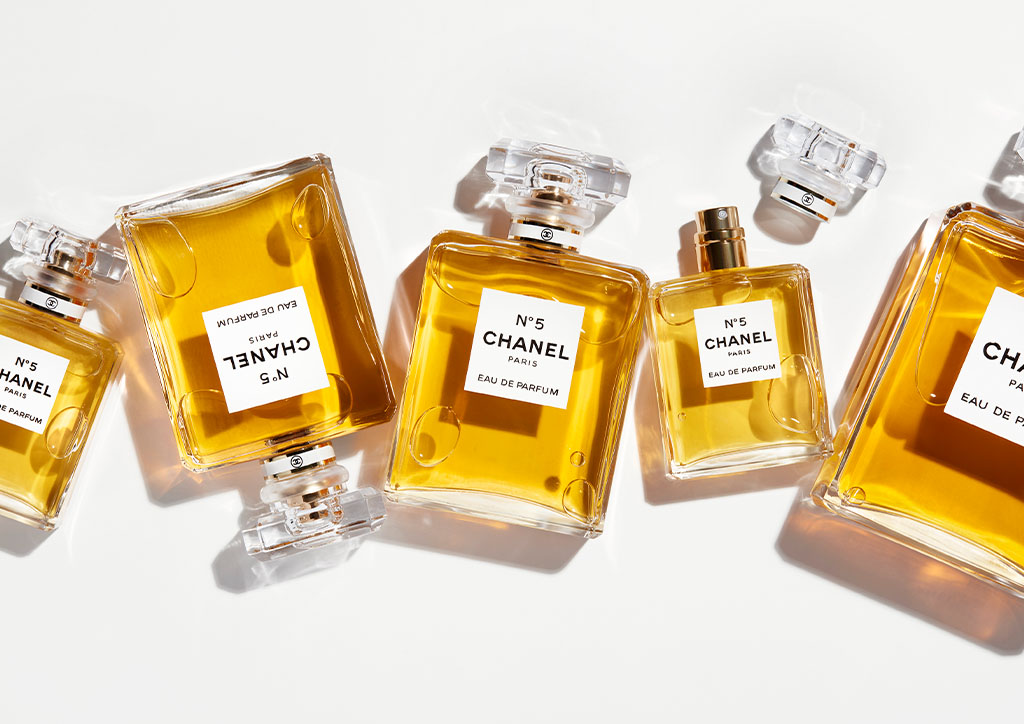
The result of Jacques Polge’s observations on the evolution of fragrance trends in the ‘80s resulted in the third interpretation of N°5. “His intention was to preserve as much of the Parfum’s richness as possible, both from an olfactory perspective and in terms of the fragrance’s amber color,” explained Olivier Polge. Offering a concentration that revived the sensuality of Ernest Beaux’s original fragrance, the eau de parfum’s floral-aldehydic bouquet exuded lavishness while maintaining the oriental signature with notes of vanilla, extending a richly dense and long-lasting scent trail that is able to keep up with the flavors of the era.
The N°5 Eau Première (2008)
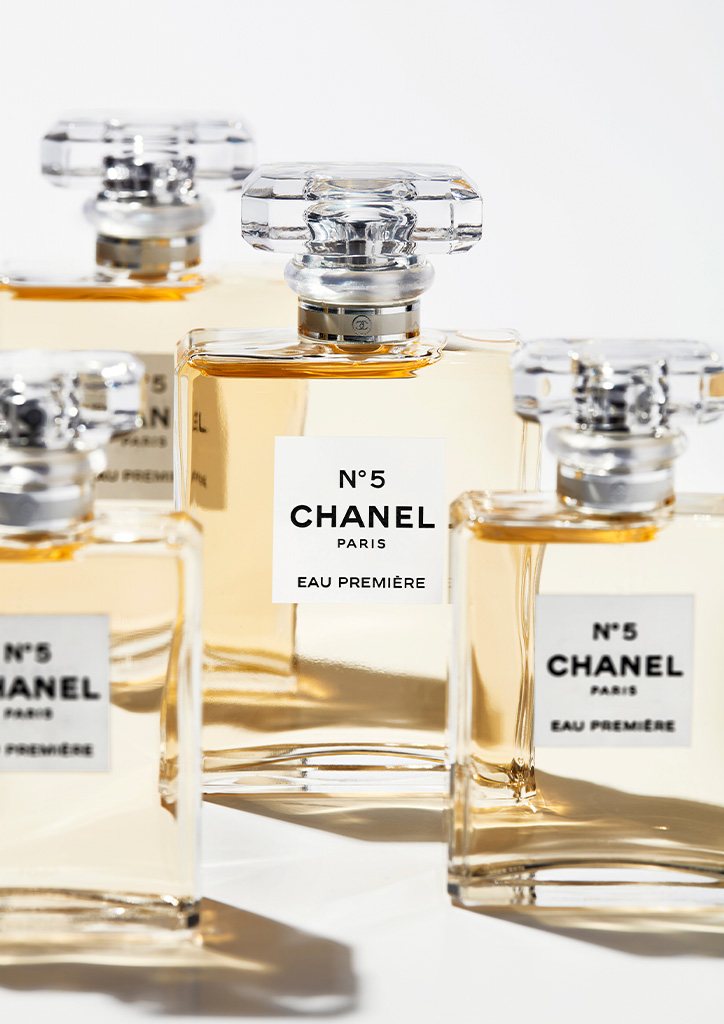
The fourth version of N°5 was released in 2008 to much awe. Airy and luminous, Jacques Polge tried to imagine how N°5 would have smelled had Ernest Beaux had access to the contemporary raw materials that Polge had in his disposal. Using the omnipresent white musks of the 2000s as well as CHANEL’s staple of citrus essence aldehydes, Polge reinvented the signature of the original fragrance. Enlivened with a touch of vanilla, “the scent trail of the Eau Première reveals another texture, closer to the skin, that remains very similar to N°5,” Olivier Polge reflected.
The N°5 L’eau (2016)
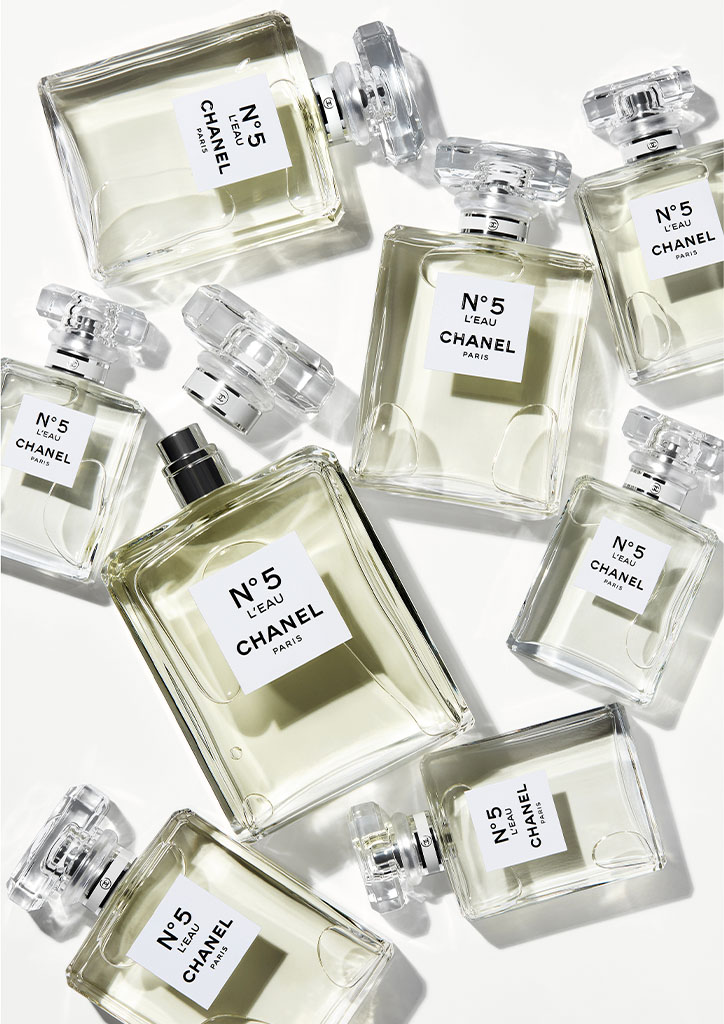
Guided by a desire for freshness, Olivier Polge created a new variation that “played with the limits of its identity,” as he revealed. “Take the image that N°5 conveys and turn it on its head, make it more fluid. More transparent, in the best sense of the word.” To this end, Polge based his scent trail around the textured cedarwood; resulting in a less enveloping fragrance than that of the other interpretations. Fresh and floral, N°5 L’EAU opens with a citrus accord of lemon, mandarin and orange that is elevated to its highest potential through the use of aldehydes. This time, the familiar rose and jasmine notes were melded with a new, fractionated note of ylang-ylang. Despite being the most distinct variation, the notes of the N°5 L’EAU are the same, illustrating the idea that just like every other medium of art, everything in perfumery is a matter of balancing the right proportion.
Commemorate a century of the N°5 with Chanel by visiting their official website. All five interpretations of the N°5 are available at select Rustan’s stores nationwide.

